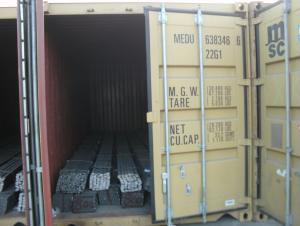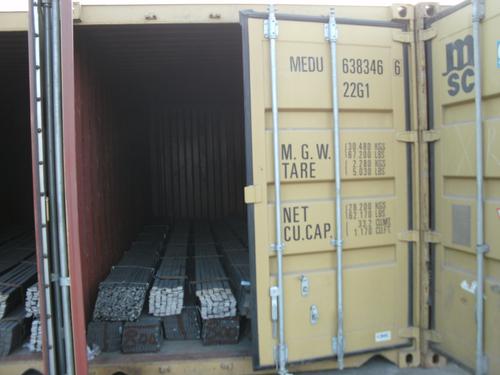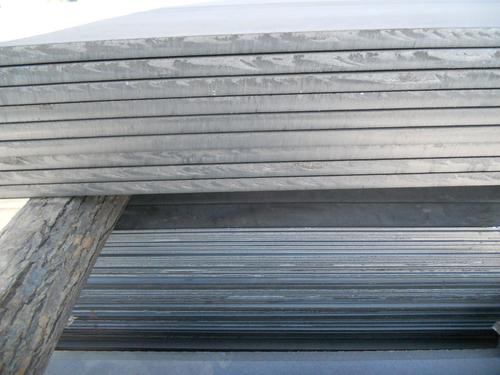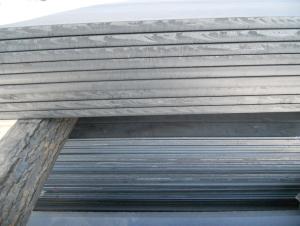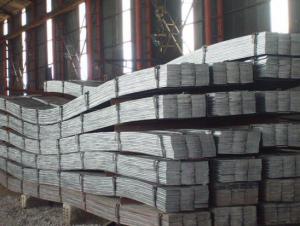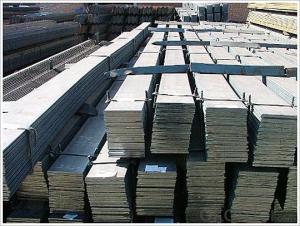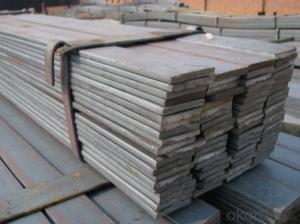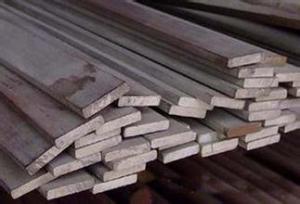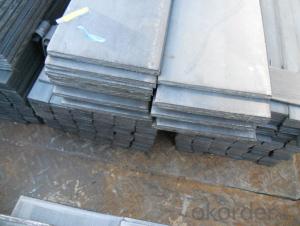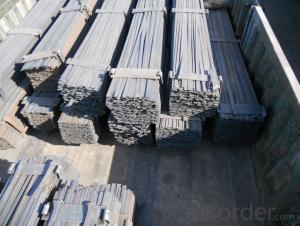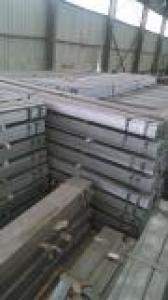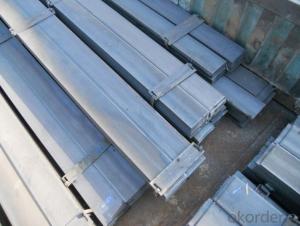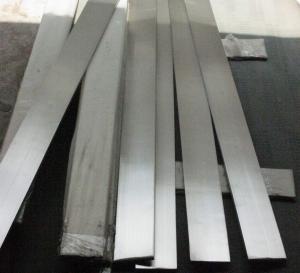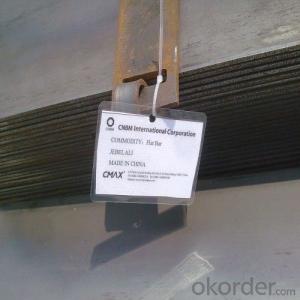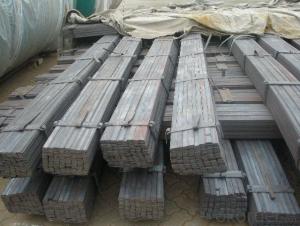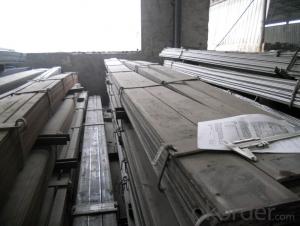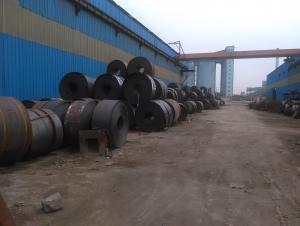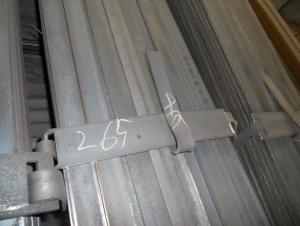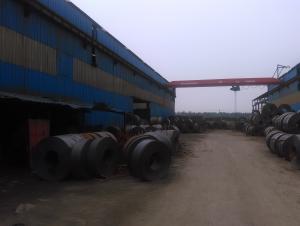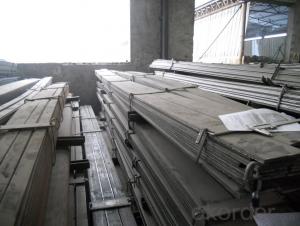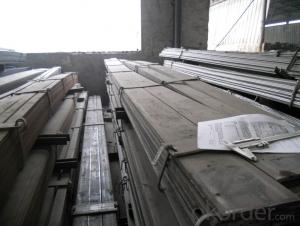GB-235 STEEL FLAT BAR
- Loading Port:
- China Main Port
- Payment Terms:
- TT or LC
- Min Order Qty:
- -
- Supply Capability:
- -
OKorder Service Pledge
OKorder Financial Service
You Might Also Like
Product Description:
OKorder is offering GB-235 STEEL FLAT BAR at great prices with worldwide shipping. Our supplier is a world-class manufacturer of steel, with our products utilized the world over. OKorder annually supplies products to European, North American and Asian markets. We provide quotations within 24 hours of receiving an inquiry and guarantee competitive prices.
Widely used for construction, Machinery manufacturing, Iron tower steel structure, Shipbuilding; Steel grating, Staircase, Bridge, Viaduct, Railway spare parts, Boilers making etc.
Packaging & Delivery of Steel Flat Bar
Packaging Details: The Steel Flat Bars are packed in bundles and loaded in 20 feet/40 feet container, or shipped by bulk cargo ,also we can do as customer's requirements.
Product Applications:
GB-235 STEEL FLAT BAR are ideal for structural applications and are widely used in the construction of buildings and bridges, and the manufacturing, petrochemical, and transportation industries.
Product Advantages:
OKorder's GB-235 STEEL FLAT BAR are durable, strong, and resist corrosion.
Main Product Features:
· Premium quality
· Prompt delivery & seaworthy packing (30 days after receiving deposit)
· Corrosion resistance
· Can be recycled and reused
· Mill test certification
· Professional Service
· Competitive pricing
Product Specifications:
Standard: GB
Material: Q235
Origin place: China
Thickness: 3mm-30mm
Width:20mm-200mm
Length: Max 12m
FAQ:
Q1: Why buy Materials & Equipment from OKorder.com?
A1: All products offered byOKorder.com are carefully selected from China's most reliable manufacturing enterprises. Through its ISO certifications, OKorder.com adheres to the highest standards and a commitment to supply chain safety and customer satisfaction.
Q2: How do we guarantee the quality of our products?
A2: We have established an advanced quality management system which conducts strict quality tests at every step, from raw materials to the final product. At the same time, we provide extensive follow-up service assurances as required.
Q3: Can stainless steel rust?
A3: Stainless does not "rust" as you think of regular steel rusting with a red oxide on the surface that flakes off. If you see red rust it is probably due to some iron particles that have contaminated the surface of the stainless steel and it is these iron particles that are rusting. Look at the source of the rusting and see if you can remove it from the surface.
Images:
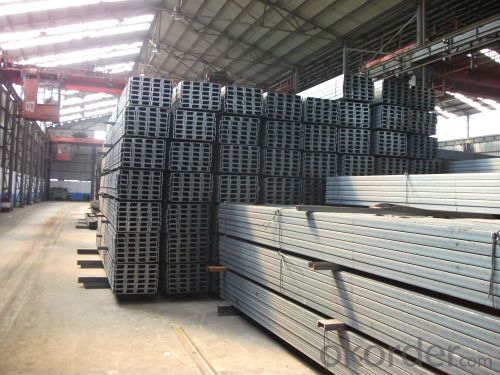
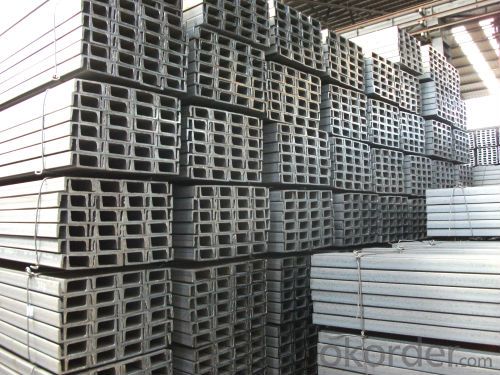
- Q: Are steel flat bars available in different surface coatings?
- Yes, steel flat bars are available in different surface coatings. Common options include galvanized, painted, and powder-coated finishes, each offering unique advantages such as enhanced corrosion resistance, improved aesthetics, or increased durability. The choice of coating depends on the specific application and desired properties of the steel flat bar.
- Q: Can steel flat bars be used as reinforcement in concrete?
- Yes, steel flat bars can be used as reinforcement in concrete. They are commonly used to enhance the tensile strength and durability of concrete structures such as beams, slabs, and columns. The steel bars are embedded within the concrete, providing additional support and preventing cracking or failure under load.
- Q: Are steel flat bars suitable for welding applications?
- Steel flat bars are well-suited for welding purposes, given their versatility and strength. They are commonly utilized in welding projects due to their ability to be easily welded with various techniques like MIG, TIG, or arc welding. The flat surface of steel flat bars provides a stable base for welding, ensuring precise and accurate welds. These bars are extensively employed in construction, manufacturing, and fabrication sectors for diverse applications such as building frames, supports, brackets, and reinforcement. Furthermore, steel flat bars come in different grades and sizes, allowing for customization to meet specific welding requirements. Overall, steel flat bars are a dependable and favored option for welding applications.
- Q: How do steel flat bars compare to carbon fiber flat bars?
- Steel flat bars and carbon fiber flat bars have distinct differences in terms of material properties and applications. Steel flat bars are known for their durability and strength, making them suitable for heavy-duty applications where high load-bearing capacity is required. They provide excellent resistance to impact, bending, and deformation, making them ideal for use in construction, manufacturing, and automotive industries. Steel flat bars are also more cost-effective than carbon fiber flat bars. On the other hand, carbon fiber flat bars offer exceptional strength-to-weight ratio and are much lighter than steel flat bars. This makes them advantageous in applications that prioritize weight reduction, such as aerospace, sports equipment, and automotive industries. Carbon fiber flat bars also exhibit excellent resistance to corrosion and fatigue, providing enhanced longevity compared to steel flat bars. In summary, steel flat bars are favored for their strength, durability, and cost-effectiveness, while carbon fiber flat bars excel in terms of lightweight design, high strength-to-weight ratio, and superior corrosion resistance. The choice between the two depends on specific requirements, intended application, and budget constraints.
- Q: Can steel flat bars be cut to specific lengths?
- Yes, steel flat bars can be cut to specific lengths.
- Q: How do I calculate the weight of a steel flat bar?
- To calculate the weight of a steel flat bar, you need to know its dimensions and the density of steel. The weight can be calculated by multiplying the volume of the bar (length x width x height) by the density of steel, which is typically around 7850 kg/m³.
- Q: Can steel flat bars be used for making brackets or brackets?
- Yes, steel flat bars can definitely be used for making brackets or brackets. Steel is a strong and durable material, making it suitable for various applications, including bracket manufacturing. Steel flat bars can be easily shaped, cut, and welded to create brackets of different sizes and shapes. They provide stability and support, making them ideal for holding objects or providing structural reinforcement. Additionally, steel's corrosion resistance makes it a reliable choice for brackets that may be exposed to moisture or other harsh conditions.
- Q: Can steel flat bars be coated with corrosion-resistant materials?
- Coating steel flat bars with corrosion-resistant materials is possible. Various methods exist for applying these coatings, including hot-dip galvanizing, electroplating, powder coating, and painting. Hot-dip galvanizing entails immersing the steel flat bars in molten zinc, which creates a strong bond between the zinc and the steel. This coating provides excellent protection against corrosion and can withstand harsh environmental conditions. Electroplating is another technique that involves depositing a thin layer of corrosion-resistant metal, such as chromium or nickel, onto the steel flat bars through an electrochemical process. This process enhances the durability and corrosion resistance of the steel surface. Powder coating is an electrostatic application of dry powder coating onto the steel flat bars, followed by heat curing to form a protective layer. This coating not only provides corrosion resistance but also offers an attractive finish and can be applied in various colors. Lastly, painting is a commonly used method where a corrosion-resistant paint is applied to the steel flat bars. The paint acts as a barrier against moisture and other corrosive elements, preventing direct contact with the steel surface. In conclusion, there are several effective techniques for coating steel flat bars with corrosion-resistant materials, including hot-dip galvanizing, electroplating, powder coating, and painting. The choice of method depends on specific requirements, budget, and aesthetic preferences.
- Q: How do you determine the corrosion resistance of a steel flat bar?
- The corrosion resistance of a steel flat bar can be determined through various methods such as conducting corrosion tests, evaluating the composition and microstructure of the steel, and considering the environmental factors it will be exposed to.
- Q: Are steel flat bars suitable for fabrication of machinery parts?
- Yes, steel flat bars are commonly used in the fabrication of machinery parts due to their strength, durability, and versatility. They provide a stable and rigid structure necessary for machinery components, making them a suitable choice for such applications.
Send your message to us
GB-235 STEEL FLAT BAR
- Loading Port:
- China Main Port
- Payment Terms:
- TT or LC
- Min Order Qty:
- -
- Supply Capability:
- -
OKorder Service Pledge
OKorder Financial Service
Similar products
Hot products
Hot Searches
Related keywords
